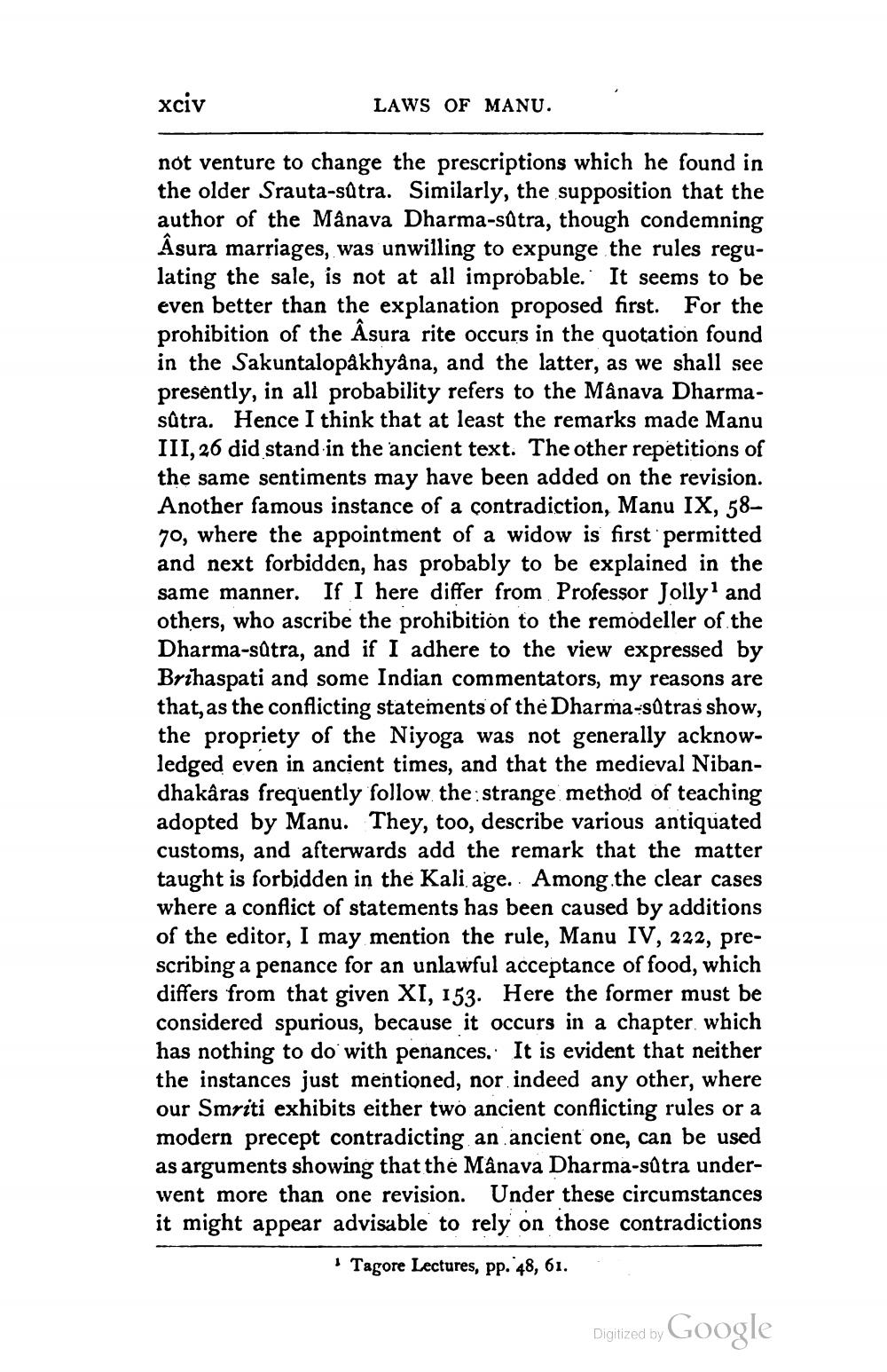________________
xciv
not venture to change the prescriptions which he found in the older Srauta-sûtra. Similarly, the supposition that the author of the Mânava Dharma-sûtra, though condemning Âsura marriages, was unwilling to expunge the rules regulating the sale, is not at all improbable. It seems to be even better than the explanation proposed first. For the prohibition of the Asura rite occurs in the quotation found in the Sakuntalopâkhyâna, and the latter, as we shall see presently, in all probability refers to the Mânava Dharmasûtra. Hence I think that at least the remarks made Manu III, 26 did stand in the ancient text. The other repetitions of the same sentiments may have been added on the revision. Another famous instance of a contradiction, Manu IX, 5870, where the appointment of a widow is first permitted and next forbidden, has probably to be explained in the same manner. If I here differ from Professor Jolly1 and others, who ascribe the prohibition to the remodeller of the Dharma-sûtra, and if I adhere to the view expressed by Brihaspati and some Indian commentators, my reasons are that, as the conflicting statements of the Dharma-sutras show, the propriety of the Niyoga was not generally acknowledged even in ancient times, and that the medieval Nibandhakâras frequently follow the strange method of teaching adopted by Manu. They, too, describe various antiquated customs, and afterwards add the remark that the matter taught is forbidden in the Kali age. Among the clear cases where a conflict of statements has been caused by additions of the editor, I may mention the rule, Manu IV, 222, prescribing a penance for an unlawful acceptance of food, which differs from that given XI, 153. Here the former must be considered spurious, because it occurs in a chapter which has nothing to do with penances. It is evident that neither the instances just mentioned, nor indeed any other, where our Smriti exhibits either two ancient conflicting rules or a modern precept contradicting an ancient one, can be used as arguments showing that the Mânava Dharma-sûtra underwent more than one revision. Under these circumstances it might appear advisable to rely on those contradictions
1 Tagore Lectures, pp. 48, 61.
LAWS OF MANU.
Digitized by
Google




